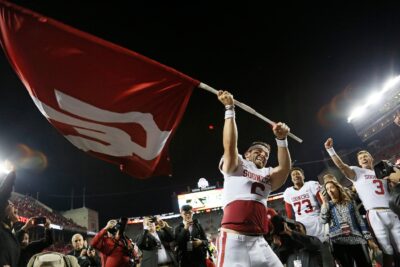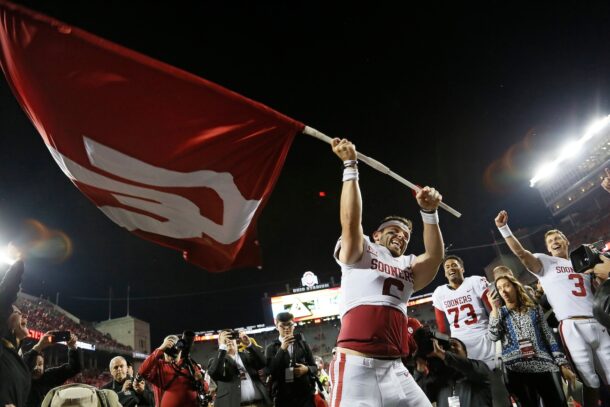
Florida basketball: Previewing the Gators in a make-or-break year for Mike White
Florida entered last season with immense expectations after landing a top-5 national recruiting class and the nation’s most coveted graduate transfer in Kerry Blackshear Jr. They began the season in the top 10 and were picked by many in the media to challenge Kentucky for the SEC regular-season championship.
The Gators left the COVID-19 shortened season as perhaps the nation’s most disappointing team, finishing 19-12 and settling for 5th in the SEC. Florida failed to receive even a single vote in the final AP Top 25 rankings, and while the Gators would have been safely in the Field of 68 had the NCAA Tournament not been canceled, it would have been surprising if Florida lasted past the first weekend.
Florida’s failure to meet expectations in 2019-2020, coupled with the pedestrian 20-16 mark in 2018-2019, have ratcheted up pressure on head coach Mike White and his staff ahead of the 2020-21 campaign. It was never going to be easy replacing Billy Donovan, the legendary coach who won 2 national championships and whose name now graces the court at the Stephen C. O’Conell Center. White has done well, too, winning as many or more NCAA Tournament games in his tenure than any SEC program or coach save John Calipari and Kentucky. But there has not been the big breakthrough fans expected after White took the program to the Elite 8 in Year 2. White, 43, is still one of the SEC’s youngest head coaches and his staff features 3 assistants in Daris Nichols, Jordan Mincy and Al Pinkins who are among the most well-respected in the sport. There’s a lot of promise on staff. Can they make good on the most talented roster they have had in Gainesville?
Here’s a breakdown of the team that will try to do that this season.
Best Player: Keyontae Johnson, Wing
For the second consecutive season, the preseason SEC Player of the Year hails from Gainesville. Last year, Kerry Blackshear Jr. won the honor, only to finish the year out of the running despite a good season that earned him 2nd team All-SEC honors.
This year, the choice is Johnson, the junior out of Norfolk, Virginia, who elected to return for his junior season. On track to graduate early, Johnson wanted to finish his degree and bet on the end of the coronavirus making in-person NBA workouts, where he figures to shine, improving his draft stock.
He can also do that on the floor this year, of course. A physical wing built like an NFL linebacker, Johnson is an elite defender with a 41.5 inch vertical and 7-2 wingspan who plays with passion and intelligence. The consistent NBA comparisons you are hear are a tougher Raja Bell or Khris Middleton, but Johnson has always reminded me of a more versatile version of former Tennessee star Admiral Schofield. Johnson can play four spots on the floor, post, has improvced his handles steadily and is among the best players in the country at attacking closeouts, as the video below demonstrates.
https://twitter.com/Efawcett7/status/1322240510912733189?s=20
Johnson isn’t really a primary scorer. He influences the game by being a secondary option and through his constant activity on both ends. As a result, it will be tough to build on his 14 points, 7 rebounds, 2 assists and a steal per night numbers from a season ago. But if Florida is going to play a more free-flowing, less set reliant brand of offense in 2020-21, you can expect Johnson, who is almost impossible to defend when he gets going downhill, to do more than his fair share on offense.
Best Newcomer: Anthony Duruji, Forward
Duruji, who sat last season after transferring from Louisiana Tech, is 1 of 3 transfers who will play for Florida for the first time in 2020-21. He’s also 1 of 2 transfers who brings All-Conference credentials from another league, having been an All Conference-USA player in 2018-19. Duruji is a great athlete who, like Johnson, can impact the game by defending multiple positions, rebounding and extending defenses from deep. He posted 4 double-doubles at Louisiana Tech in 2018-19, but none of those games was as impressive as his 22-point, 9-rebound night against eventual SEC champion LSU.
https://twitter.com/Efawcett7/status/1325486863080017920?s=20
That game showed he’ll have no issues adjusting to life in the SEC, and his addition gives Florida, a team that played a whole SEC season with basically one wing 2 seasons ago, another proven wing to join Johnson and Scottie Lewis this season. What a difference that could make against the bigger, more athletic teams that have given Florida fits the last couple of seasons.
Biggest team strength: Depth
Offense might have also worked here. After all, Florida finished the season ranked 27th in KenPom offensively last year, the program’s 2nd-highest finish under White. Florida was even better on offense in SEC play, when they ranked 13th in the country in conference-only efficiency. They return the bulk of their offensive production, but questions about how the program will adjust to a new offensive philosophy (White has promised more up-temp0, less set-reliant basketball) and the departure of 2-year starter Andrew Nembhard, who transferred to Gonzaga, linger.
As a result, the team’s biggest strength is likely depth. This is one of the SEC’s deepest teams, a stark contrast from White’s 7-man rotation that grinded out 20 wins and a 2nd-round NCAA Tournament 2 seasons ago. White and the Florida staff flipped the roster after that season, a 2-year project that saw several Florida players transfer, 3 new players transfer in, and 3 recruiting classes heavy on athleticism transform the roster from a group that needed to play methodically and slow to this year’s team, which could play as many as 10 players double-digit minutes and will be able to run and press.
White’s decision to implement a slower, methodical half-court attack drove Florida fans nuts, but it was really roster-based. It’s White’s job to build the roster, of course, but it’s no coincidence that having flipped it into a bigger unit teeming with athleticism, White now looks to return to his run-n-gun Louisiana Tech roots. Florida’s personnel is built to run and overwhelm opponents with length and athleticism, and they’ll look to do that and be capable of it this season.
Biggest team weakness: Defense?
Until last season, outstanding defense had been a staple of Florida’s culture under White. The Gators finished in the top 25 nationally in KenPom defensive efficiency every year of the White era until 2019-2020, when they slipped all the way to 61st. Florida struggled in two main areas: producing turnovers (146th) and at the rim, where a lack of a plus rim protector, combined with the athletic limitations of Blackshear made Florida susceptible to teams with a quality presence inside.
Florida should improve defensively in 2020-21, thanks to added depth on the wings. But White’s defensive scheme, which calls for a lot of hedging on pick and rolls, is tough on centers. Florida was spoiled by Kevarrius Hayes’ mastery in pick and roll defense for nearly 4 seasons and consistently had a rim protector, whether it was John Egbunu, Hayes or even Dorian Finney-Smith, to clean up as well. Blackshear just wasn’t quite as athletically capable of sprinting out to hedge and then recover to his man. That weakness meant Florida was vulnerable at the tin.
To address that issue this season, Florida hopes Omar Payne, a former top-50 recruit who showed flashes a season ago, improves on an inconsistent freshman campaign that saw him torched repeatedly in pick and roll defense. Florida also hopes for improvement from space-eater Jason Jitoboh, a different type of big, and should be buoyed by Colin Castleton, the former blue-chip big from the Orlando area who transferred in from Michigan and gives Florida a center with an absurd 7-5 wingspan.
If Florida wants to reach its Sweet 16 and beyond potential, this must be a top 40 defense. That starts with an improved frontcourt.
Regular-season outlook: 3rd in the SEC
Florida has the talent to challenge for an SEC regular-season championship. Whether the Gators can make good on that promise will depend on an improving defense, how well the 3-headed point guard monster of Tre Mann, Ques Glover and Cleveland State transfer Tyree Appleby can replace Nembhard, and whether Florida can manage to replace Blackshear’s 13 points and 8 rebounds a night in the frontcourt, as well his off-court leadership.
The schedule is challenging. A huge “Feast Week” game against Virginia was canceled due to Florida’s COVID issues, but the Gators will still play multiple NCAA Tournament caliber teams out of conference in Oklahoma, West Virginia and Florida State, and none of those games will be in Gainesville.
In SEC play, the Gators draw league favorites Tennessee, LSU and Kentucky twice, and have tricky road trips with no return home dates against Arkansas and Auburn, teams that should finish in the top half of the league. It’s a challenging slate, but a deep Florida team is better positioned to deal with the rigors of conference play than they have been in the last few seasons.
March Outlook: Sweet 16
A few analysts, like Aaron Torres at Kentucky Sports Radio, have really soured on White’s program, picking the Gators to finish 8th in the league and outside the NCAA Tournament field. Certainly Florida has disappointed over the last 2 seasons, but it’s still a program where the floor is quite high. After all, even the 2018-19 Gators, who started 3 freshmen, managed to beat a veteran Nevada team full of pros to advance to the Round of 32. This team has more talent than that team and should be an NCAA Tournament team on that basis alone.
The bigger question is can a shift to a quicker tempo on the offensive end and a style of play that better suits Florida’s huge athleticism advantage defensively combine to produce a team that plays to the level of its talent more consistently?
Time will tell, but the leadership on this team is good between Johnson and the magnetic sophomore Scottie Lewis, and there’s reason to be optimistic Florida returns to the second weekend of March Madness this season.
Neil Blackmon covers Florida football and the SEC for SaturdayDownSouth.com. An attorney, he is also a member of the Football and Basketball Writers Associations of America. He also coaches basketball.







